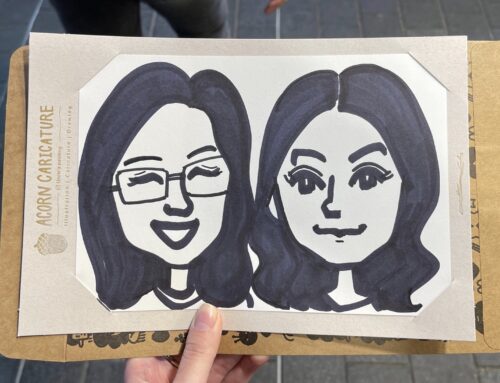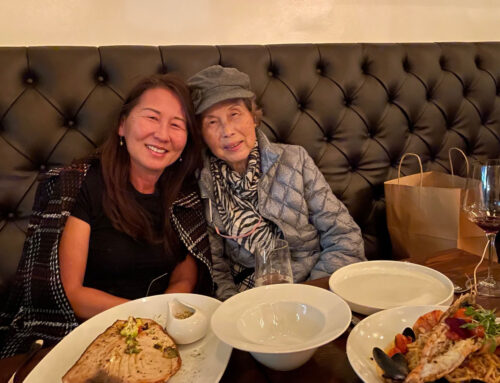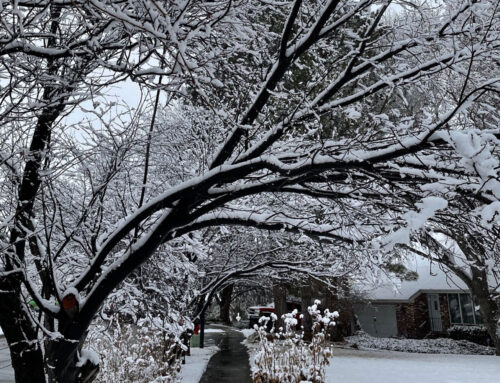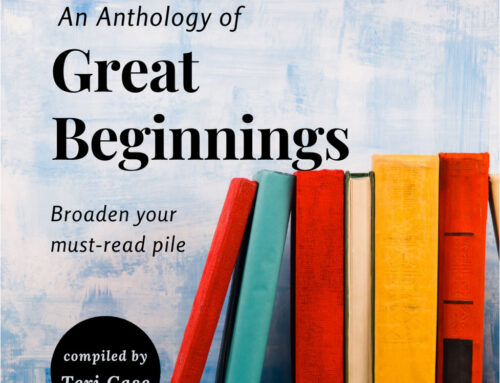I read several essays about Thanksgiving this year and one really resonated with me. NY Times book critic Parul Sehgal wrote that while she was making her mother-in-law’s stuffing recipe, she had an epiphany. “I’m not enjoying myself until I am, because I suddenly recognize this work – it’s the work I know. I know what it means to combine disparate elements, using only the freshest and crispiest you can find, and to make from it an offering, something for someone else’s pleasure. It’s like writing, only you’re thinking with your hands, your nose, your mouth.”
I couldn’t agree with her more. As my husband Mark and I scrambled around the kitchen on Thanksgiving morning making turkey, stuffing, mashed potatoes, green beans, butternut squash and appetizers for my extended family of 11, I realized it was like writing something on a blank page. In cooking, I wash, chop, smell and taste. In writing, I have to choose the right word, vary sentence structure, establish the correct tone, and make a point in order for it all to work. When I set the table and make sure I have the right number of glasses, plates, utensils (fork, knife, spoon in that order please, left to right), and coordinate napkins, centerpieces and candles, I am orchestrating setting, character, plot, and story arc. Preparing Thanksgiving dinner is like the creative writing process, something I’ve gotten into the habit of doing more regularly this past year, ultimately to provide something in writing as an offering for readers to enjoy.
Making Thanksgiving dinner has not always been smooth. When I was growing up as a Korean immigrant in the ‘70s, my family modified the traditional Thanksgiving dinner so much that the turkey became a side dish in a much larger Korean feast of sweet crispy fried chicken, marinated short ribs, and bowls of bright red, dripping kimchi (fermented cabbage). Chunky mashed potatoes were eaten with chopsticks, and cranberry sauce was placed on your plate right next to the kimchi — sweet and salty tastes blending surprisingly well together. In fact, anything was good as long as there was kimchi, and that’s what we had at every Thanksgiving meal until I went away to college. Koreans had their own Thanksgiving in September called Chusok celebrating the fall harvest, so American Thanksgiving was just another occasion to indulge in a medley of food with little regard to the real meaning of the holiday.
Writing a true-life novel about my grandmother, which is what I have been doing for the past few years, is as disjointed as my Thanksgiving dinners growing up. Disparate ingredients, foods and cultures join together. Sometimes the flavors work, sometimes they don’t. You write, edit, throw out, revise. Sometimes writing flows effortlessly. Other times, it tastes like dirt. Still, “I’m not enjoying myself until I am,” and recognize that writing, like Thanksgiving, is a process.
As my Korean family assimilated more, our Thanksgiving dinners started to look different. Every year, there seemed to be new, more American dishes, like yam, mashed potatoes that you could only eat with a fork or spoon (not chopsticks), and once I think we even had creamed corn. When I married Mark, the first Caucasian to become part of my Korean-American family, he introduced us to what Thanksgiving should really be. He made the juiciest, most delicious turkey we had ever eaten. He showed us his secret: douse the turkey with butter (these days olive oil), and using a turkey baster, coat the skin with turkey juices every thirty minutes until the bird is golden brown and cooked through. The result is always a sensation and worthy of hundreds of photos over the 25 years we have been married.
So what does the Americanization of my Thanksgiving meals have to do with my writing? It’s an evolution, a gradual process that can’t be rushed. The techniques have to be perfected, the amount of spices and different ingredients experimented with, thrown out, reevaluated, and measured again to create a better turkey, fluffier mashed potatoes, and crispier shallots for the green beans. I am writing the second draft of my novel now, and I expect I will have to baste it a few more times until I’m satisfied that I’ve gotten it right.
The day after Thanksgiving, Mark said to me, “Well, honey, I think we have Thanksgiving down to a science now.” I hope it won’t take me 25 years to complete my book. At some point, I will finish it and share the offering, hoping it will entertain and educate. I give thanks to the journey and to you my patient readers.










Thank you for sharing this, Rosa! As always, your writing is beautiful and insightful. These lines in particular made me smile and laugh: “Disparate ingredients, foods and cultures join together. Sometimes the flavors work, sometimes they don’t. You write, edit, throw out, revise. Sometimes writing flows effortlessly. Other times, it tastes like dirt.” So true!
Our family, like yours, enjoys a shared history of trying to combine disparate culinary traditions. Sometimes Scottish + German + Dutch + Japanese results in something savory, other times it “tastes like dirt.” But always it’s a learning experience, a chance to decide who we are and we want to become. I’m currently experimenting with sourdough starter breads, mixing in “conventional” and “unconventional” ingredients (such as ginger, pecans and figs) to see what happens. I like to watch the dough rising to great heights, but there are days when I end up with a brick. So much like writing—and editing—as you noted.
I love how receptive you are to change, willing to try new things—qualities that ultimately lead to delicious meals, compelling narratives . . . and fascinating friends. I feel honored every time you choose to share a snapshot (literally, and in writing!) of your rich family history. Can’t wait to see your book in print!
A very belated response to your comment! I think you are much braver than I am when it comes to food, especially when it comes to baking. I can improvise a little more with cooking but with baking I stick to the recipe. I am nervous about launching into the revision phase of my book but I think I have all the ingredients – I just have to experiment and find the right mix! Thank you for helping me on my journey!!